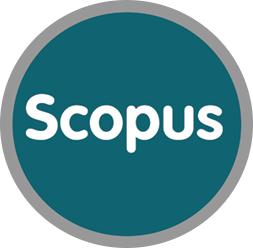Синтез та властивості наночасток на основі С/Fe3O4, С/Fe3-XCrXO4, С/Li0.5Fe1.5CrO4 – матеріалу анодів для літій-іонних батарей
DOI: https://doi.org/10.15407/hftp08.04.448
Анотація
Композити (С/Fe3O4, C/Fe3-xCrxO4, C/Li0.5Fe1.5CrO4) синтезовані модифікованим методом Печіні. Допування магнетиту хромом і літієм приводить до зниження потенціалу заряду з ~1.8 В (С/Fe3O4) до 0.9 В (С/Li0.5Fe1.5CrO4). Зменшення розміру зерна анодного матеріалу до 10–30 нм і присутність на поверхні зерна провідного вуглецю покращує кінетику процесів заряд/разряду, для кращого матеріалу (С/Li0.5Fe1.5CrO4) дозволяє отримати зворотню ємність у першому циклі ~800 мАчас/г при струмі С/10.
Ключові слова
Посилання
1. Arico A.S., Bruce P., Scrosati B., Tarascon J.M., Schalkwijk W. Van. Nanostructured materials for advanced energy conversion and storage devices. Nat. Mater. 2005. 4: 366. https://doi.org/10.1038/nmat1368
2. Reddy M.V., Subba Rao G.V., Chowdari B.V.R. Metal oxides and oxysalts as anode materials for li ion batteries. Chem. Rev. 2013. 113(7): 5364. https://doi.org/10.1021/cr3001884
3. Zhang L., Wu H.B., Lou X.W.D. Iron-oxide-based advanced anode materials for lithium-ion batteries. Adv. Energy Mater. 2014. 4: 2630. https://doi.org/10.1002/aenm.201300958
4. Lin X., Wu K., Shao L., Shui M., Jiang X., Wang D., Long N., Ren Y., Shu J. Facile preparation of Cr2O3@Ag2O composite as high performance lithium storage material. J. Alloys Compd. 2014. 598: 68. https://doi.org/10.1016/j.jallcom.2014.02.026
5. Guo B., Chi M., Suna X.-G., Daia S. Mesoporous carbon–Cr2O3composite as an anode material for lithium ion batteries. J. Power Sources. 2012. 205: 495. https://doi.org/10.1016/j.jpowsour.2012.01.092
6. Wu H., Du N., Wang J., Zhang H., Yang D. Three-dimensionally porous Fe3O4 as high-performance anode materials for lithium-ion batteries. J. Power Sources. 2014. 246: 198. https://doi.org/10.1016/j.jpowsour.2013.07.063
7. Wang X., Liu Y., Arandiyan H., Bai H.Y., Wang J.M., Liu S., Sun H. Uniform Fe3O4 microflowers hierarchical structures assembled with porous nanoplates as superior anode materials for lithium-ion batteries. Appl. Surf. Sci. 2016. 389: 240. https://doi.org/10.1016/j.apsusc.2016.07.105
DOI: https://doi.org/10.15407/hftp08.04.448
Copyright (©) 2017 S. M. Malovanyy, E. V. Panov, E. A. Genkina, V. A. Galaguz, T. S. Glushchak


This work is licensed under a Creative Commons Attribution 4.0 International License.



